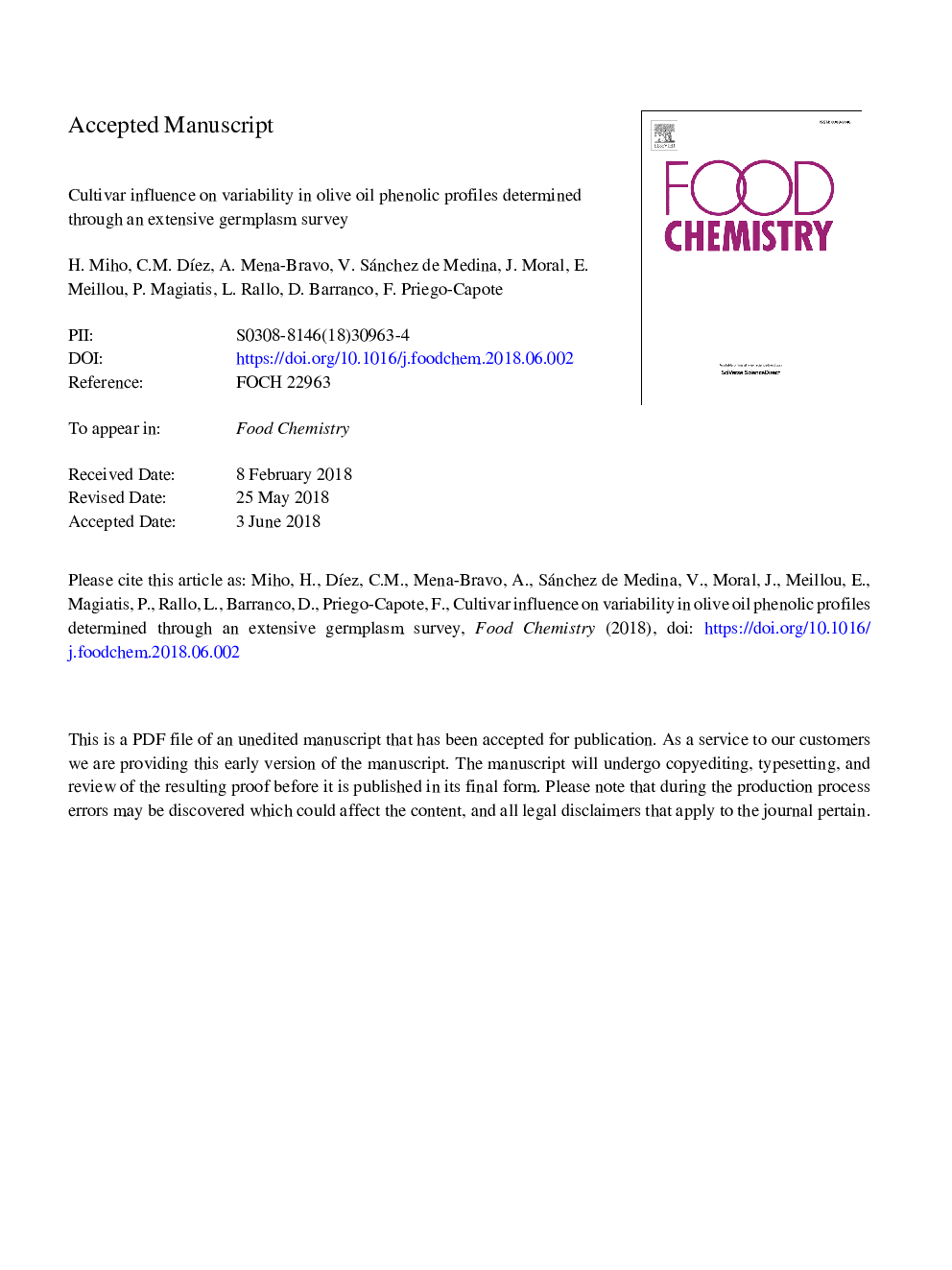| Article ID | Journal | Published Year | Pages | File Type |
|---|---|---|---|---|
| 7584490 | Food Chemistry | 2018 | 32 Pages |
Abstract
Despite the evident influence of the cultivar on olive oil composition, few studies have been devoted to exploring the variability of phenols in a representative number of monovarietal olive oils. In this study, oil samples from 80 cultivars selected for their impact on worldwide oil production were analyzed to compare their phenolic composition by using a method based on LC-MS/MS. Secoiridoid derivatives were the most concentrated phenols in virgin olive oil, showing high variability that was significantly due to the cultivar. Multivariate analysis allowed discrimination between four groups of cultivars through their phenolic profiles: (i) richer in aglycon isomers of oleuropein and ligstroside; (ii) richer in oleocanthal and oleacein; (iii) richer in flavonoids; and (iv) oils with balanced but reduced phenolic concentrations. Additionally, correlation analysis showed no linkage among aglycon isomers and oleocanthal/oleacein, which can be explained by the enzymatic pathways involved in the metabolism of both oleuropein and ligstroside.
Keywords
Related Topics
Physical Sciences and Engineering
Chemistry
Analytical Chemistry
Authors
H. Miho, C.M. DÃez, A. Mena-Bravo, V. Sánchez de Medina, J. Moral, E. Melliou, P. Magiatis, L. Rallo, D. Barranco, F. Priego-Capote,
